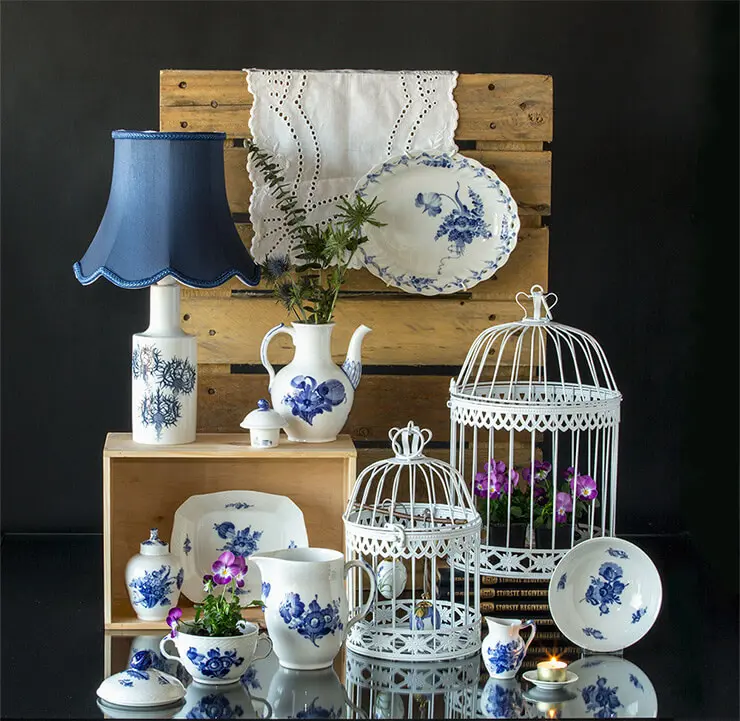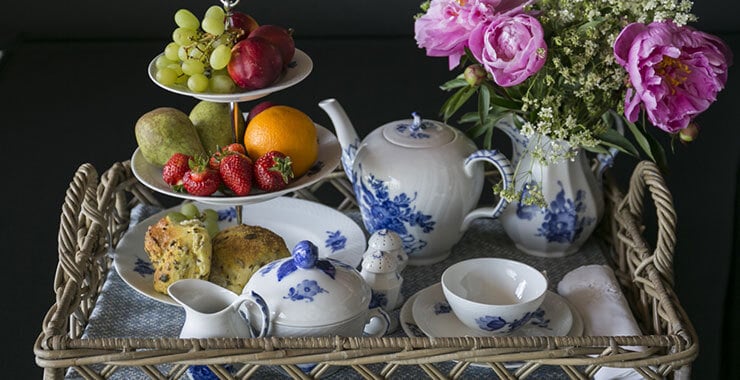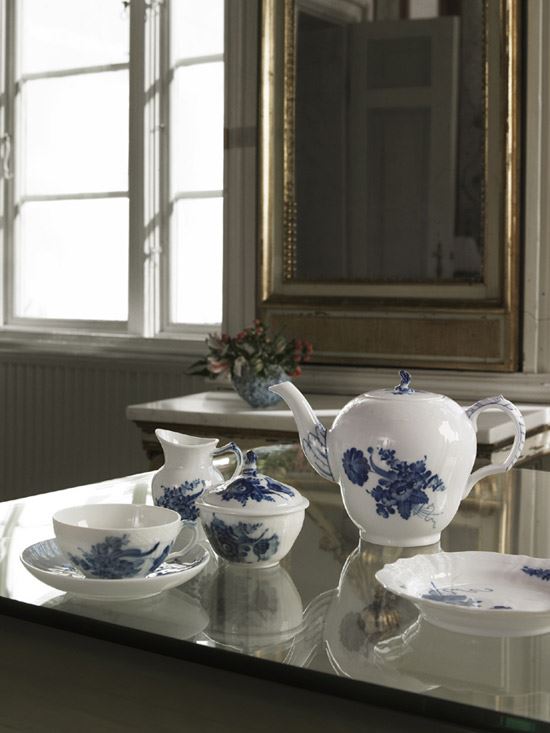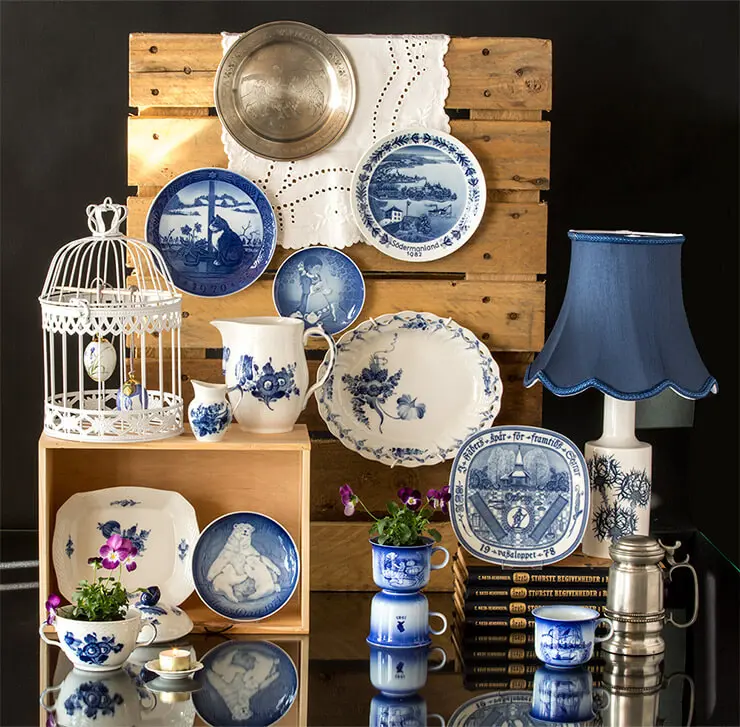A bouquet of blue flowers
The Blue Flower tableware has a long history and has become a part of Danish culture and tradition. - In fact, to this day it is still one of the most popular sets from Royal Copenhagen. Each individual flower bouquet in the decoration is composed of some of Denmark's most well-known and beloved summer flowers. The bunches of flowers consists of tulip, rose, bindweed, poppy, auricula and carnations. This dinnerware is painted by hand and therefore no two pieces are identical.
The pattern with the Danish garden flowers is timeless and appeals to both classic and modern interior styles. This is also one of the reasons why younger generations have become interested in the old sets. The set can be a beautiful contrast to a minimalist decor or add a traditional touch to a more romantic environment.
Blue Flower history: The second oldest Royal Copenhagen tableware set
Royal Copenhagen's Blue Flower was originally designed by G. F. Hetsch in 1779, making it the second oldest porcelain set from the Royal Porcelain Factory. Initially, Blue Flower was only a coffee set, and it wasn't until 1885, when Arnold Krogh redesigned the set, that it was expanded to also be a dining set.
It is largely thanks to Arnold Krogh that the blue-painted sets Blue Fluted and Blue Flower have the popularity they have today. Arnold Krogh was hired as artistic director of Royal Copenhagen in 1885, and from the beginning he set himself the goal of tightening up the decorations of Blue Flower and Blue Fluted.
Today, the set is no longer produced and you can only buy Blue Flower sets used.

Three variations of Blue Flower
Blue Flower is available as Blue Flower Braided, Blue Flower Angular, and Blue Flower Curved. Today, many people mix the three designs and set the table with all three at the same time. However, Blue Flower is also one of the designs that can easily be matched with many other blue designs, as well as with classic white designs.
Younger generations have become interested in the old designs that they recognize from their grandparents' homes. Many inherit the tableware and want to supplement it with more pieces or new variations. A tremendous number of pieces have been produced for the dinnerware set, so it is advantageous to know about the three versions of the design.
Blue Flower Braided
Royal Copenhagen Blue Flower Braided, as we know it today, has been in production on the braided tableware since 1885. Blue Flower Braided is known for the characteristic relief border in basket weaving, which frames the blue bouquets.
Blue Flower Curved
Royal Copenhagen Blue Flower Swirl saw the light of day in 1780. In the beginning of the 19th century, the set went out of fashion and didn't truly come back into its own until around 1868.
Blue Flower Angular
Royal Copenhagen Blue Flower Angular was designed in 1913 by Arnold Krogh and, as the name suggests, has a square shape.

Hand-painted design and unique patterns
In accordance with a tradition that emerged in the second half of the 18th century, the cobalt blue flower bouquets were painted with the individual painter's own artistic freedom, which made the bouquets never quite the same. Since 1780, these painters, also known as blue painters, have signed their work with their personal initials or marks.
The execution of the flowers on the porcelain set Blue Flower required training in a very special technique, in the form of the pressure with which each brush stroke is made. It is precisely this pressure that gives the flowers their varying shades and a freshness that can only be achieved by using the hand.
Once the decorations are made, the glaze is applied. - Blue Flower is therefore an underglaze set, and can withstand all types of food and drink, as well as dishwasher washing (75°) and heating in the oven.








 We are e-approved
We are e-approved





